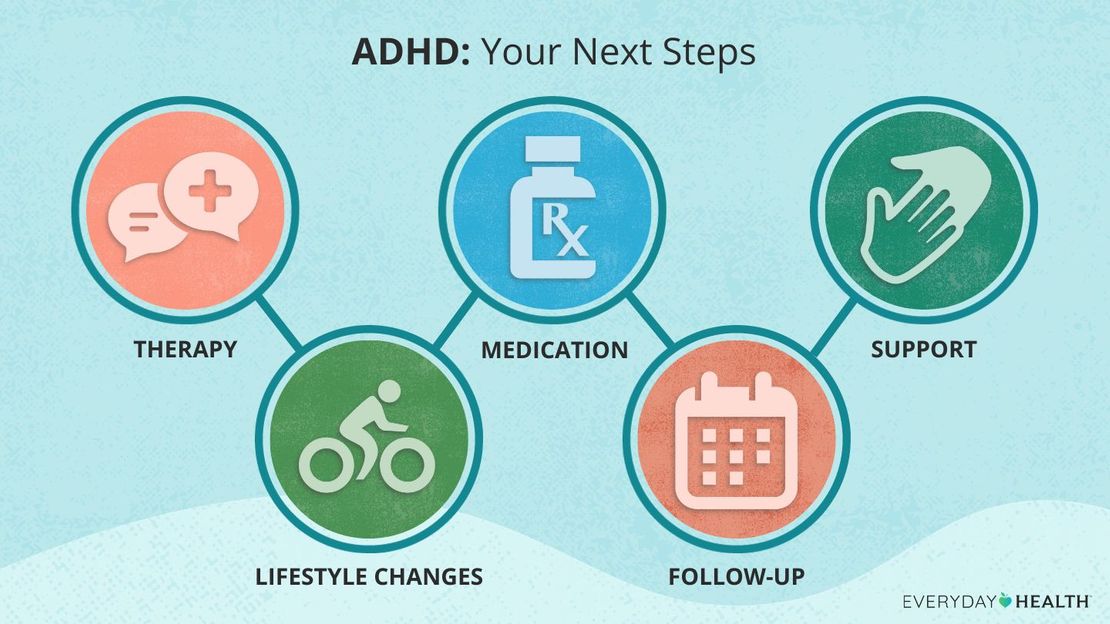If you're noticing new sleep problems, appetite changes, or skin irritation after starting Daytrana, take a breathyou're not alone. These are some of the most common Daytrana side effects, and the good news is that many are manageable with a few simple tweaks. Think of this as your friendly guide to navigating the bumps while keeping the benefits.
Still, some reactions deserve fast attention, especially heart symptoms, big mood shifts, or serious skin changes. My goal here is to help you tell the difference between "this is annoying but normal" and "okay, this needs a call or a visit." Let's walk through it togethercalm, clear, and practical.
Quick take
Daytrana is the methylphenidate patcha stimulant used for ADHD. Why do some people love it? You get steady symptom control without swallowing a pill, and you can take the patch off to shorten the duration. That flexibility is a lifesaver for some families. According to the official manufacturer guidance and clinician-reviewed sources, Daytrana's pros include consistent coverage, the option to remove it earlier on days you need a shorter effect, and avoiding the gastrointestinal route, which some people prefer.
What's the trade-off? You might run into the usual ADHD medication side effectsappetite loss, trouble falling asleep, headaches, or jitterinessplus one unique to the patch: skin irritation. Most of these are mild. But there are important exceptionsespecially for anyone with a personal or family cardiac history, a history of mood disorders or psychosis, seizure history, or Raynaud's. If you use an MAOI (or used one in the past 14 days), Daytrana isn't for you. That caution is based on standard stimulant guidance from major references such as Mayo Clinic and WebMD.
Common effects
Let's look at the Daytrana side effects you're most likely to noticeand what to do right away to make life easier.
Skin irritation at the patch site: Because Daytrana is absorbed through the skin, some redness, mild itch, or tenderness is common. Picture it like a faint rectangle where the patch satannoying but usually not alarming. Rotating placement helps a lot: alternate hips each day, and don't put a new patch on the same spot within a few days. Apply to clean, dry, cool skin; skip lotions, oils, and powders on that area; and avoid heat (hot tubs, heating pads) which can increase absorption and irritation. Sources like the Daytrana site and Mayo Clinic emphasize proper application and avoiding water/heat during wear.
When is irritation not "just irritation"? If you see widespread rash, severe itching, blistering, or color changes in the skin (especially whitening or loss of pigment), stop using the patch and call your clinician. Depigmentation that looks like vitiligo has been reported rarelythis is not something to push through.
Sleep problems (insomnia): This one's classic. If you're lying in bed staring at the ceiling, try shifting the schedule. Apply earlier in the morning and consider shortening wear timemany people remove the patch before the full 9 hours to help evening sleep. A reliable evening wind-down routine helps too: dim lights, no late caffeine, and gentle movement or reading. Clinicians often recommend experimenting (with guidance) to find the sweet spot where you get daytime focus but can still fall asleep.
Appetite loss and weight changes: Stimulants can silence hunger cues, especially midday. Front-load calories with a protein-rich breakfast before you apply the patch. Keep calorie-dense, nutritious snacks ready for when appetite returnsthink smoothies with nut butter, yogurt with granola, cheese and crackers, or avocado toast. For kids, regular growth checks are important. Many families find that "dinner after removal" is a reliable window for getting in a solid meal.
Headache, dizziness, nausea: Hydration and steady snacks usually help. Headaches often fade after the first couple of weeks; if they don't, bring it up with your prescriber. Dizziness or nausea can be eased with small, frequent meals and avoiding dehydration. If symptoms are persistent or severe, that's your cue to check in.
Nervousness or mild mood changes: Mild edginess can happen, especially when you first start or after dose changes. Tracking patterns is your superpower here. Do symptoms spike right after applying? Near the end of the wear time? That info helps your clinician fine-tune dose and timing.
Watch closely
These are less common Daytrana side effects, but they matterkeep them on your radar.
Blood pressure and heart rate increases: Stimulants can nudge both upward. A simple home monitor can be useful. If you consistently see high readings or you feel palpitations, chest discomfort, or shortness of breath, call your prescriber.
Finger/toe color changes or numbness (Raynaud's/vasculopathy): If your fingers or toes turn pale, blue, or red, feel cold or numb, or develop sores, report it. These symptoms are uncommon but important.
Tics, tremors, or uncontrolled movements: Some people notice transient jitterinessthink "too much coffee." Motor tics are different: repetitive, hard-to-control movements or sounds. If those appear or worsen, tell your clinician promptly.
Vision changes: Blurred vision or trouble focusing deserves a check-in. If vision changes are sudden or severe, stop the patch and seek care.
Serious signs
Okay, the big red flags. If you or your child has any of the following, act now.
Cardiac symptoms: Chest pain, fainting, shortness of breath, or irregular heartbeatseek urgent care or call emergency services. Better to be overly cautious with heart symptoms.
Severe mental health changes: New or worsening depression, agitation, aggression, or suicidal thoughts need immediate attention. Remove the patch and contact your clinician or crisis support right away. You're not overreactingsafety first.
Seizures or stroke-like symptoms: Sudden weakness on one side, slurred speech, severe headache, confusion, or a seizurecall emergency services. If you can, share the medication name, dose, and timing.
Priapism (prolonged/painful erections): In males, this is rare but urgent. If an erection lasts more than 4 hours or is severely painful, seek emergency care. It's a medical urgency because of the risk of tissue damage.
Serious skin reactions and depigmentation: If you see blistering, peeling, or white patches where pigment seems to be fading, stop Daytrana and contact your prescriber. A dermatology referral may be appropriate.
Allergic reactions: Hives, swelling of the face or throat, trouble breathingcall emergency services. Afterward, document what happened and discuss future medication planning.
At-home tips
Let's get practical. These small changes can make a big difference in managing Daytrana reactions at home.
Patch placement and rotation: Apply to clean, dry, cool skin on alternating hips. Press firmly for about 30 seconds, smoothing the edges. Avoid lotions, oils, or powders on the sitethey can interfere with adhesion and cause irritation. Skip heating pads or very hot baths, which can increase absorption and irritation. If edges lift, press back down; avoid covering with extra tape unless your clinician okays a specific patch cover.
Timing to reduce Daytrana sleep problems: Apply early in the morning, and experiment (with your clinician's guidance) with shorter wear times. Many people remove the patch 13 hours before the maximum wear time to help sleep. Combine with a calm evening routine and a screen wind-down. If insomnia persists, ask about dose or timing adjustments.
Supporting appetite and growth: Front-load a protein-rich breakfast before applicationeggs, Greek yogurt, smoothies with milk and nut butter. Pack easy, dense snacks for school or work. For kids, track height and weight on growth charts. If appetite suppression is significant, your prescriber might recommend adjustments or consider supervised medication breaks during weekends or holidaysbut only with clinical guidance.
When a patch falls off: If it won't stick or falls off, you can apply a new one to a different site, but don't wear patches longer than the total daily limit and never use more than one at a time. Don't cut patchesdoing so can alter dosing and safety. Keep the skin dry and avoid heavy friction (like tight waistbands) on the placement site.
Safe disposal and storage: After removal, fold the patch so the sticky sides adhere to each other, and dispose of it safely per local guidance. Keep patches away from kids and petsthere's still medication in used patches. Manufacturer instructions and the FDA Medication Guide offer clear disposal tips.
Who should avoid
Some situations call for extra cautionor avoiding Daytrana altogether.
Interactions: Daytrana should not be used with MAOIs or within 14 days of stopping one. Tell your clinician about all medications and supplements, including decongestants or other stimulants. This isn't just a formality; it helps prevent dangerous interactions.
Health conditions: Use caution if you have a history of heart disease, high blood pressure, glaucoma, bipolar disorder or psychosis, seizures, hyperthyroidism, or substance use disorders. Daytrana may not be the best fit in some of these scenarios, or you may need closer monitoring.
Kids, pregnancy, breastfeeding: Daytrana is approved for certain pediatric age groups; growth monitoring is key. During pregnancy or breastfeeding, decisions are individualizeddiscuss risks and benefits with your clinician to find the safest plan for you and your baby.
Patch vs pills
How does Daytrana compare to oral ADHD medications? Here's the gist.
Skin vs gut: Pills go through your digestive system; patches go through your skin. If you dislike swallowing pills or have GI side effects with tablets, the patch can be a nice alternativethough you trade GI issues for potential skin irritation.
Duration control: With Daytrana, you can remove the patch earlier to shorten the day's effect. That can be great for school-focused coverage without late-night stimulation. Extended-release pills are "set it and forget it," but you can't dial them down mid-day.
Class risks: Stimulant-class effects are similar across the boardsleep problems, appetite changes, potential cardiovascular effects, and mood shifts. The right choice often comes down to your body's response and your daily routine.
Call your clinician
Wondering when to message your prescriber versus when to head to urgent care?
Same-week check-in: Ongoing appetite loss, persistent headaches, manageable but bothersome insomnia, mild skin irritation that doesn't resolve with rotation, or mood edginess that seems tied to timing. Bring notes: daily wear time, sleep patterns, appetite, hydration, any BP/HR readings, and photos of skin reactions. This kind of detail helps tailor your plan.
Urgent care: Chest pain, fainting, severe shortness of breath, sudden vision changes, seizures, stroke-like symptoms, signs of a severe allergic reaction, or priapism. Remove the patch and seek help immediately.
Real-world tips
Here are a few "wish I'd known that sooner" insights from families and teens navigating Daytrana side effects.
First 24 weeks: Expect a settling-in period. One parent told me their child's appetite dipped, but they found success with a "breakfast bowl" ritualGreek yogurt, peanut butter, banana, and granolabefore the patch goes on. Another found that moving the patch a little higher or lower on the hip reduced rubbing and redness from waistbands.
School-day rhythms: Many caregivers swear by a consistent morning routine: breakfast first, patch next, backpack last. If sleep started to suffer, they moved application 3060 minutes earlier and shaved an hour off wear timejust enough to protect bedtime.
Teens and activities: Sports and swimming can loosen adhesion. Dry the skin well before applying, and avoid placing the patch where gear rubs. If it comes off, replace once according to guidelinesdon't double up. Teens often appreciate the control of removing a little earlier on game nights to avoid late-night restlessness.
Clinician pearls: Small tweaks go a long way: earlier application, shorter wear, rotating sites, and a touch lower on the hip to avoid waist friction. If headaches or moodiness persist, clinicians may adjust dose or consider alternative ADHD options. The goal is not to "push through" side effectsit's to find a fit that supports daily life.
Trusted sources
For reliable, up-to-date information on Daytrana side effects and safe use, look for official or clinician-reviewed resources. The FDA Medication Guide and the manufacturer's instructions offer practical "how-tos" for application, wear time, and disposal. Major medical sites like WebMD and Mayo Clinic provide balanced, accessible overviews, including cardiovascular and psychiatric precautions. You can also report side effects directly to the FDA through MedWatch. If you're curious about application tips and safety details, the Daytrana site summarizes patch instructions, and clinician-reviewed overviews from Mayo Clinic and WebMD can help you understand what's common, what's rare, and when to call.
Before we wrap up, here's a quick story. A teenager I worked with felt "wired" at night for the first two weeks. We experimented: earlier application by 45 minutes, removal at 7.5 hours instead of 9, and a no-screens-after-8 rule. Within days, sleep improved and the daytime focus stayed solid. That's the kind of fine-tuning that turns a tough start into a workable routine.
So, what do you thinkwhat's been the trickiest Daytrana side effect for you? If you're up for it, keep a week-long log of wear time, meals, mood, and sleep. Bring it to your next visit. And if anything feels off, don't tough it out. Your plan should fit your life, not the other way around. I'm rooting for you as you find that balance.
Conclusion: Daytrana can be a strong ADHD option, especially if you like the flexibility of a patch. Most Daytrana side effectslike skin irritation, sleep hiccups, or appetite dipsare manageable with better patch habits, earlier timing, and nutrition tweaks. But serious symptoms, such as chest pain, fainting, severe mood changes, seizures, or allergic reactions, need urgent care. The most important step is staying curious and communicative: track what you notice, ask questions, and work with your clinician on dose or wear-time adjustments. Your goal isn't to suffer through side effects; it's to find a routine that supports your brain and your day. If you have questions or want to share what's working for you, I'd love to hear it.
FAQs
What are the most common Daytrana side effects?
The most frequently reported reactions are skin irritation at the patch site, insomnia, appetite loss, headache, and mild nausea or dizziness.
How can I reduce skin irritation from the Daytrana patch?
Rotate the placement site daily, apply the patch to clean, dry, cool skin, avoid lotions or powders on the area, and keep the patch away from heat sources.
Can I adjust the patch wear time to improve sleep?
Yes—many users apply the patch earlier in the morning and remove it 1–3 hours before the maximum 9‑hour limit to lessen evening stimulation.
When should I seek urgent medical care while using Daytrana?
Call emergency services if you experience chest pain, fainting, severe shortness of breath, sudden mood changes with suicidal thoughts, seizures, or any signs of a serious allergic reaction.
Is Daytrana safe for children and teens?
Daytrana is approved for certain pediatric age groups, but growth, appetite, and cardiovascular monitoring are essential. Discuss any concerns with your clinician regularly.
Disclaimer: This article is for informational purposes only and does not constitute medical advice. Always consult with a healthcare professional before starting any new treatment regimen.
Related Coverage
If struggling with focus, disorganization, forgetfulness or impulsiveness, this article covers what ADHD signs to note, what questions to ask doctors, and key diagnostic details to share....
ADHD can make showering difficult. But using reminders, hygiene checklists, and creating a sensory-friendly bathroom space can help build showering habits....
Feeling stuck? Task paralysis can halt progress even when you want to move forward. Learn how to recognize and overcome it....
The Adderall shortage has made getting medication difficult. Here's what to do about alternatives, prescription options, lifestyle changes for managing ADHD....
The Vyvanse shortage continues into 2024 and likely 2025 due to production capacity problems keeping pace with surging ADHD demand. Tips for coping and alternatives....
ADHD involves challenges with focus, impulsivity, and managing behavior. Healthy lifestyle habits, treatment plans, and good sleep hygiene can provide relief....
The ongoing Vyvanse shortage in 2023 is making access difficult. Discover possible causes, alternative ADHD medications, and tips for conserving your supply....
Discover the potential risks and interactions when taking bupropion and Adderall together, and explore alternative treatment options for managing ADHD and depression....
Adderall shortages can disrupt treatment for those with ADHD. Learn causes of shortages, impacts, coping strategies, alternative medications, and self-care....
If struggling with focus, impulsivity or hyperactivity, meet with a skilled ADHD psychiatrist in Philadelphia for evaluation, testing, medications, therapies and coping strategies....








